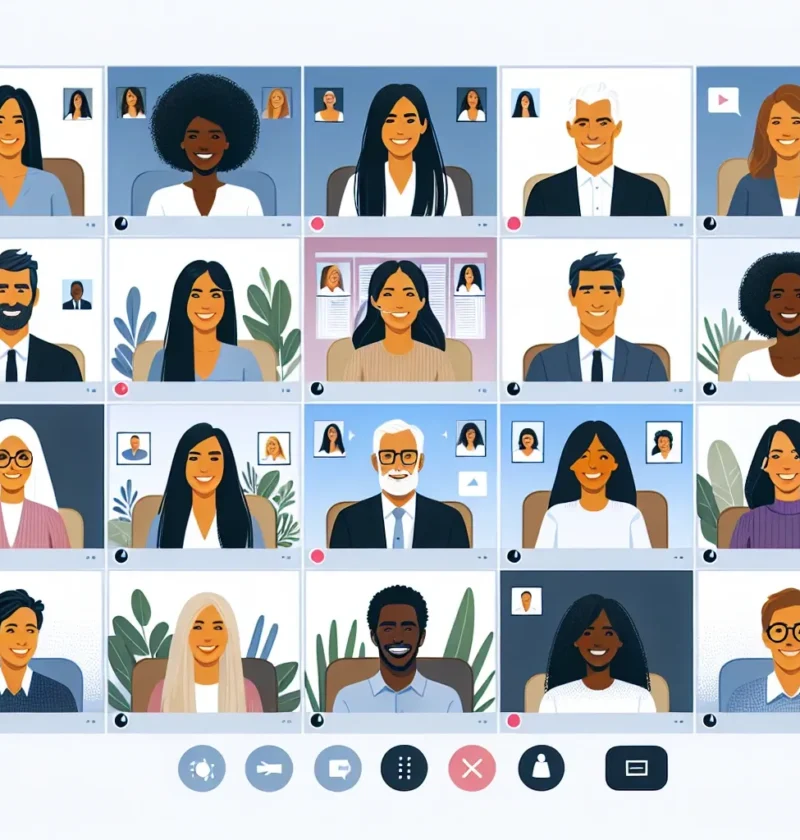In the realm of group video conferences, understanding the ideal Field of View (FOV) is essential for ensuring an optimal experience. FOV refers to the extent of the observable world seen at any given moment through the camera lens. The right FOV can enhance communication, make participants feel more connected, and avoid any awkward cropping of faces or important visual cues.
Understanding Field of View (FOV)
Field of View is typically measured in degrees and represents how much of the scene the camera can capture. It’s crucial to distinguish between Horizontal FOV, Vertical FOV, and Diagonal FOV:
- Horizontal FOV: The width of the scene captured.
- Vertical FOV: The height of the scene captured.
- Diagonal FOV: The diagonal width of the scene captured, often used by manufacturers as a reference point.
Here is a comparison table for different types of Field of View:
| Type | Measurement Scope |
|---|---|
| Horizontal FOV | Width of the scene |
| Vertical FOV | Height of the scene |
| Diagonal FOV | Diagonal width of the scene |
Importance of Ideal FOV in Group Video Conferences
Choosing the ideal FOV for group video conferences involves balancing several factors. A FOV that’s too narrow may not capture all participants, leading to a disconnected experience. Conversely, a FOV that’s overly wide can introduce distractions from the background. Here are key considerations:
Number of Participants
The number of participants is a prime factor in determining the FOV. For small groups of 2-3, a narrower FOV of around 60-90 degrees is effective. This range captures everyone without including too much extraneous background. However, for larger groups of 4 or more, a wider FOV of 100-120 degrees ensures that all participants are visible.
Room Size and Layout
The physical size of the room and its layout also play crucial roles. In smaller rooms, a narrower FOV can suffice, while large meeting rooms may require a wider FOV. The placement of participants and the shape of the room should be factored in as well.
Camera Placement
Where the camera is placed can significantly impact the FOV needed. Cameras positioned farther away from participants will need a narrower FOV to avoid a distorted perspective. Conversely, cameras closer to the participants might require a wider FOV to capture everyone adequately.
Aspect Ratio and Resolution
The aspect ratio (e.g., 16:9, 4:3) and resolution (HD, 4K) of the video also influence the choice of FOV. Higher resolution cameras can maintain clarity at wider FOVs, whereas lower resolution cameras might struggle with detail.
Technological Factors
Modern video conference platforms offer features like automatic framing and speaker tracking. These technologies use algorithms and AI to automatically adjust the FOV based on speaker activity and room dynamics. Utilizing these features can greatly enhance the video conferencing experience.
Software Capabilities
Some conferencing software offers built-in zoom and pan capabilities to adjust the FOV dynamically. This is especially useful in large meetings where participants might move around.
Best Practices for Selecting Ideal FOV
- Analyze the Room: Evaluate the size, shape, and layout of the room to understand the optimal FOV required.
- Consider Participant Number: Adjust the FOV based on the expected number of participants to ensure everyone is visible.
- Test Camera Placement: Experiment with different camera placements to find the ideal spot that captures everyone with minimal distortion.
- Utilize Technology: Leverage features like auto-framing and speaker tracking to improve the video quality dynamically.
- Account for Resolution: Choose a FOV that complements the camera resolution to maintain clarity and detail.
Common FOV Ranges for Group Video Conferencing
Here’s a quick reference table for common FOV ranges based on different group sizes and room compositions:
| Group Size | Suggested FOV |
|---|---|
| 2-3 Participants | 60-90 Degrees |
| 4-6 Participants | 90-110 Degrees |
| More than 7 Participants | 110-120 Degrees |
Conclusion
Getting the ideal FOV for group video conferences can significantly enhance the quality of interaction and engagement among participants. By considering factors such as the number of participants, room size, camera placement, and leveraging modern technological features, you can ensure that your video conferences are effective and inclusive. Always remember to test various settings and configurations to find what works best for your specific needs.

